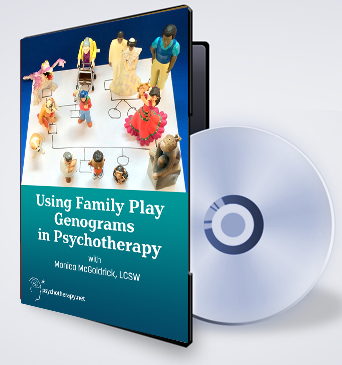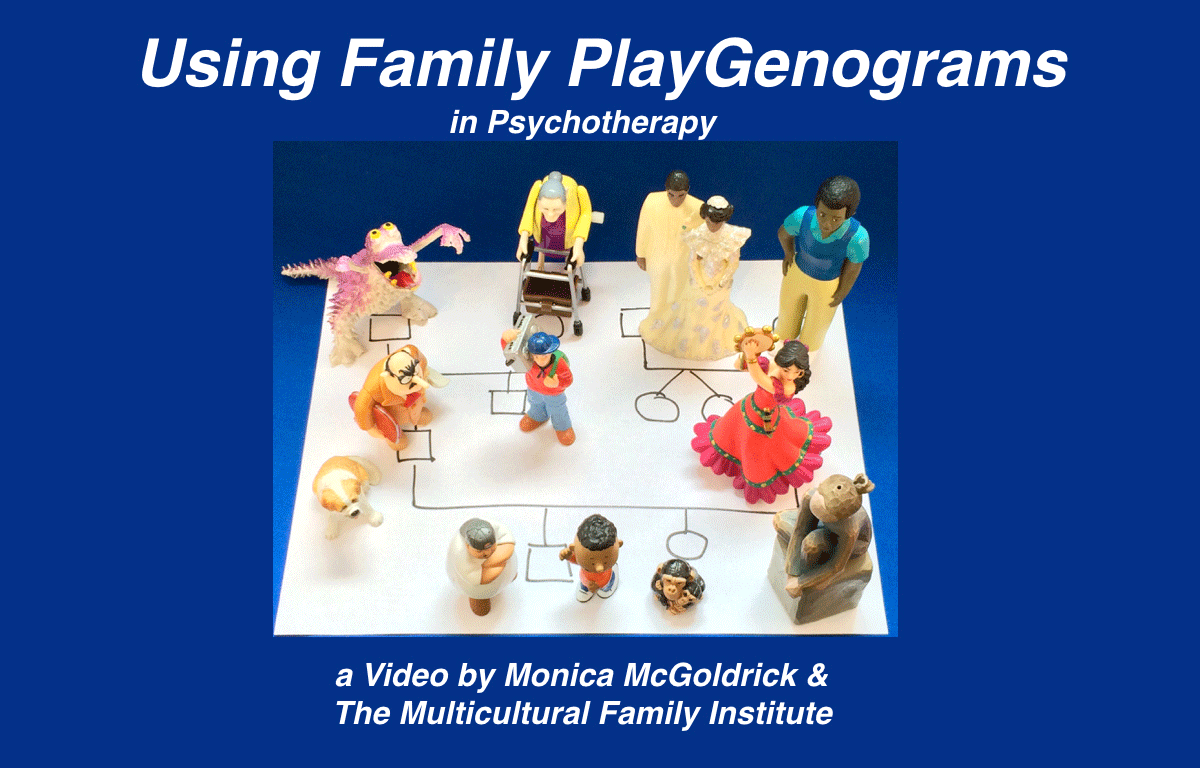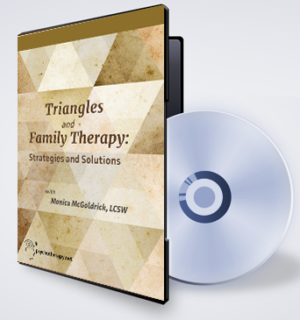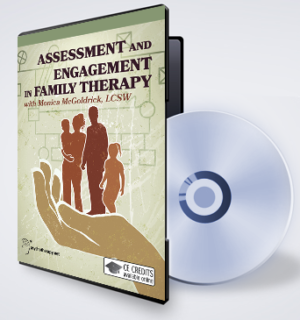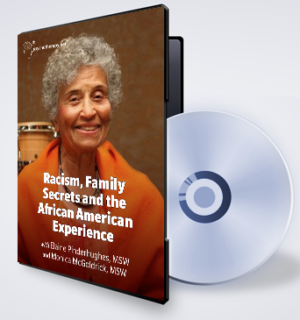Using Family Play Genograms in Psychotherapy
Download or purchase at Psychotherapy.net
Play genograms put children at an advantage because they require adults to move to the child’s level of play, rather than forcing the child to behave in the constricted ways adults generally operate.” –Monica McGoldrick.
The play genogram, using small toy figures to represent different family members, borrows from play therapy and is especially suited to families with young children and teens. Watch as McGoldrick demonstrates the approach in a case study exploring the conflict between Denise, a stressed-out single mother of three, and her smart but angry daughter, Kayla. You’ll see how a collaborative play genogram can diffuse tension with humor and open up communication. You’ll also learn how to use the information uncovered by each family member’s choice of figurines to build compassion, deepen connection, and accelerate change.
Description
The Family Play Genogram video is a beautiful way to learn Genograms, family relationships, life cycle development, and the uses of play in therapy. Imagination, generosity, new connections and the power to change relationships -all are illustrated in a method that can be used with young children, adolescents, parents and couples. The video can be integrated in any course teaching family systems and Family Therapy.
As family therapy approaches have evolved over the years, the systems perspective, with its use of the genogram, remains a unique, evocative way of understanding a family’s complexities. In this video, family therapy expert Monica McGoldrick demonstrates the family play genogram, a powerful interactive tool for children, adolescents, and adults in family therapy. Here, you’ll learn techniques straight from Dr. McGoldrick herself, with insights that come only from a longtime champion for the use of genograms in family therapy.
Family play genograms—originally developed by renowned child therapist Eliana Gil—offer therapists a creative, nonverbal element to highlight the intergenerational strains and strengths inherent in all families. Borrowing from sandplay therapy and play therapy with children, play genograms ask each member to represent different family members with small figurines, and the results are then explored verbally. Here, McGoldrick presents a case study exploring an ongoing power struggle between Denise, an African-American single mother, and her 13-year-old daughter, Kayla. Denise has moved forward since leaving two abusive boyfriends and is raising her three children with the help of her mother, herself struggling with substance abuse, and her more capable grandmother. Kayla, the middle child and only girl, experiences Denise as overprotective and nagging, even though Kayla is intelligent and well behaved. The duo come to therapy to work through this, and McGoldrick presents them with the play genogram as a way to reveal their underlying concerns.
You’ll watch as McGoldrick explains her work, with illustrations that show the genogram and figurines. You’ll also learn about the supplemental work she uses with the duo, and how the play genogram serves to diffuse tension with humor and open up communication. You’ll also learn how to leverage the play genogram’s insights to build compassion, deepen connection, and accelerate change.
This video gives you the essentials of family play genograms that will enhance your work with families, children, and teens. Stream this video today to learn from a master in the field.
By watching this video, you will:
- Understand the uses of a family play genogram with parents and adolescents.
- Learn how to engage family members in discussing the genogram.
- Discover techniques for highlighting different aspects of the family system.

